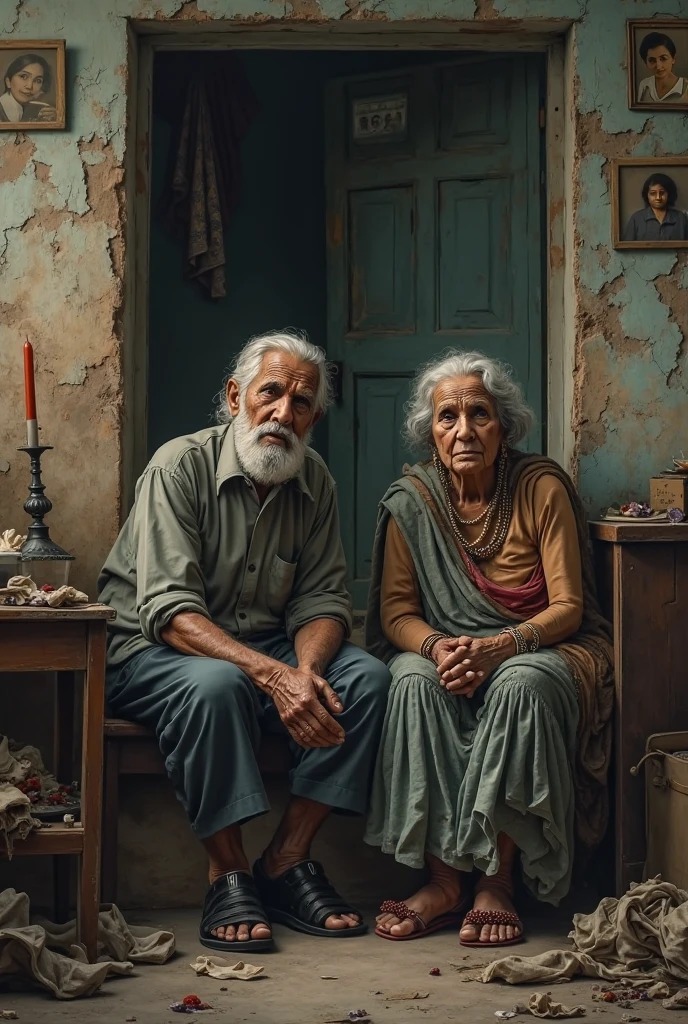The family fall and the Parsis in Cyrus Mistry’s Doongaji House
DOI:
https://doi.org/10.54753/eac.v14i2.2457Keywords:
Postcolonial Indian Theatre, religious conflicts, Anglophilia, Parsis, Doongaji HouseAbstract
Abstract India’s post-colonial theatre is an artistic expression of unparalleled richness. Its importance lies not only in its aesthetics, but also in the themes it deals with. This theatre is indebted to the independence process, which is why it is consolidated as a type of dramaturgy that is deeply critical of the socio-political context. Through this artistic expression, India's problems were denounced. Cyrus Mistry's Doongaji House is an example of this. In this work, one of India's many social problems is brought to the fore: religious conflicts. As a country of great cultural diversity (it has twenty-two official languages, as well as hundreds of unofficial dialects) and religious diversity (seven official religions: Hinduism, Islam, Jainism, Sikhism, Zoroastrianism, Buddhism, Christianity), conflicts are commonplace. This article will attempt to analyze these issues in relation to the Parsis and the repercussions of independence for this group.References
Anand, N. R. (1950) The Indian Theatre. Denis Lobson LTD.
arZan. (25 de julio de 2023). The Parsi baugs of Mumbai. Parsik Habar. https://parsikhabar.net/bombay/the-parsi-baugs-of-mumbai/6623/
Bhabha, H. (2002) El lugar de la cultura. Manantial.
Bhatia, N. (2004) Acts of Authority/Acts of Resistance: Theater and Politics in Colonial and Postcolonial India. The University of Michigan Press.
Chakraborty, D. (1997) Postcoloniality and the Artifice of History: Who Speaks for “Indian” Pasts? En R. Guha (Ed.), A Subaltern Studies Reader 1986-1995 (pp. 263-293). University of Minnesota Press.
Dharwadker, A. B. (2005) Theatres of Independence. Drama, Theory, and Urban Performance in India since 1947. University of Iowa Press.
García Barrientos, J. L. (2012). Cómo se comenta una obra de teatro: ensayo de método. Pasodegato.
Gramsci, A. (2000). Cuadernos de la cárcel. Tomo VI. Ediciones Casa Juan Pablo.
Guha, R. (1998). Dominance without Hegemony. History and Power in Colonial India. Oxford University Press.
Guha, R. (Ed.) (1999) A Subaltern Studies Reader 1986-1995. University of Minnesota Press.
Guha, R. (2002). Las voces de la historia y otros estudios subalternos. Crítica.
Guha, R. y Spivak, G. Ch. (Eds.) (1988) Selected Subaltern Studies. Oxford University Press.
Gupta, C. B. (1954). The Indian Theatre. University of Delhi.
Hall, S. (2003) Introducción: ¿quién necesita “identidad”? en S. Hall y P. du Gay (Comps.). Cuestiones de Identidad Cultural. Amorrortu Ediciones.
Luhrmann, T. M. (1996). The Good Parsi: The Postcolonial ‘Feminization’ of a Colonial Elite. Man. New Series, 29(2), 333-357.
Mistry, C. (2006) Doongaji House. En P. Sharma y C. Mistry, A Touch of Brightness/Doongaji House (pp. 111-182). Sahitya Akademi. Obra original publicada en 1978.
Molina Concha, T. V. (2018). La imagen del subalterno en el teatro postcolonial de India. Estudio de obras de Girish Karnad, Manjula Padmanabhan, Cyrus Mistry y Partap Sharma [Tesis de Maestría no publicada]. Universidad Nacional de Cuyo, Facultad de Filosofía y Letras.
Muni, B. (1951). Natia-shastra. Asiatic Society of Bengal.
Pandey, G. (1997) In Defense of the Fragment: Writing about Hindu-Muslim Riots in India Today. En R. Guha (Ed.), A Subaltern Studies Reader 1986-1995 (pp. 1-33). University of Minnesota Press.
Prakash, G. (1997). Los estudios de la subalternidad como crítica post-colonial. En S. Rivera Cusicanqui y R. Barragán (Comp.), Debates Post Coloniales: Una Introducción a los Estudios de la Subalternidad (pp. 293-313). SEPHIS, Editorial historias y Ediciones Aruwiry.
Rangwalla, N. (2016) The Voices of Ethnicity in Cyrus Mistry’s ‘Doongaji House’. IJRAR- International Journal of Research and Analytical Reviews, 3(2), 146-150. https://ijrar.com/upload_issue/ijrar_issue_289.pdf
Said, E. (2002). Orientalismo. Cultura Libre.
Schütze, M. (1903). The Services of Naturalism to Life and Literature. The Sewanee Review, 11(4), 425-443.
Shakespeare, W. (1925). The Complete Works of William Shakespeare. P. F. Collier & Son Company.
Singh, J. (1989). Different Shakespeares: The Bard in Colonial/Postcolonial India. Theatre Journal, 41(4), 445-458. https://doi.org/10.2307/3208007
Spivak, G. Ch. (2003). Can the Subaltern speak? En B. Ashcroft, G. Griffiths y H. Tiffin (Eds.), The post-colonial studies reader (pp. 24-28). Routledge.
Todorov, T. (1998). La Conquista de América. El problema del otro. Siglo XXI Editores.
Walsh, J. E. (2006). A Brief History of India. Facts on File.

Published
How to Cite
Issue
Section
License
Copyright (c) 2025 Tania Valeria Molina Concha

This work is licensed under a Creative Commons Attribution-NonCommercial-ShareAlike 4.0 International License.
EAC declara una política de autoarchivo que les permite a los autores colaboradores publicar y difundir sus artículos en otros medios electrónicos (webs personales, repositorios institucionales, blogs, etc.) bajo los requisitos de la licencia CC BY-NC-SA 4.0 Como condición exige que suministren la información bibliográfica pertinente que acredite su primera publicación, lo que se autoriza solo después de que la EAC haya publicado la investigación.
El autor conserva los derechos de su obra publicada. La revista EAC le solicita únicamente que se le cite como fuente original (revista, editorial, DOI y URL de la obra), que no use la obra con fines comerciales u onerosos, pero sí que se mencione explícitamente la existencia y especificaciones de licencia antes mencionada.
EAC no cobra honorarios por procesamiento ni publicación de artículos. Todas nuestras gestiones son totalmente gratuitas.







